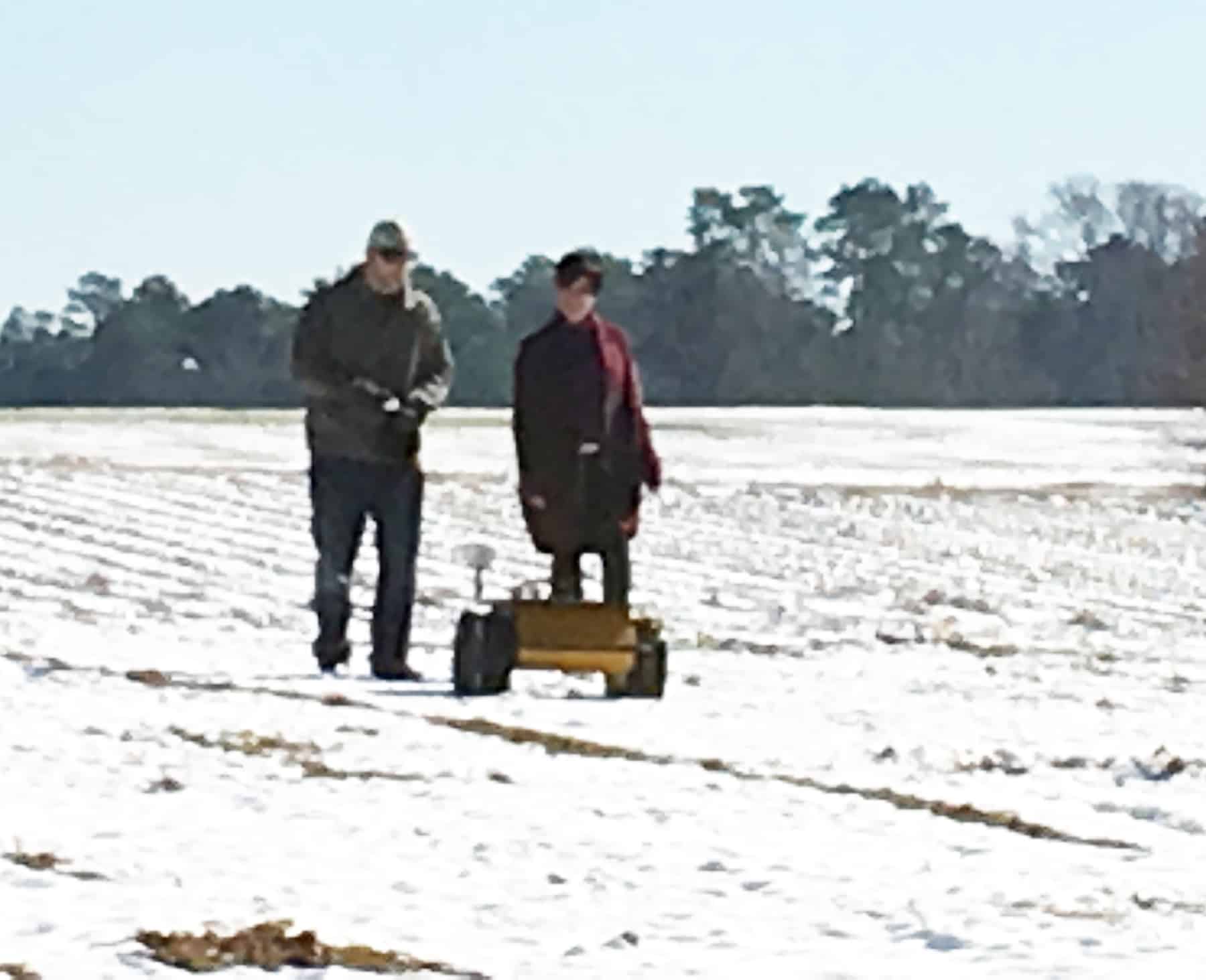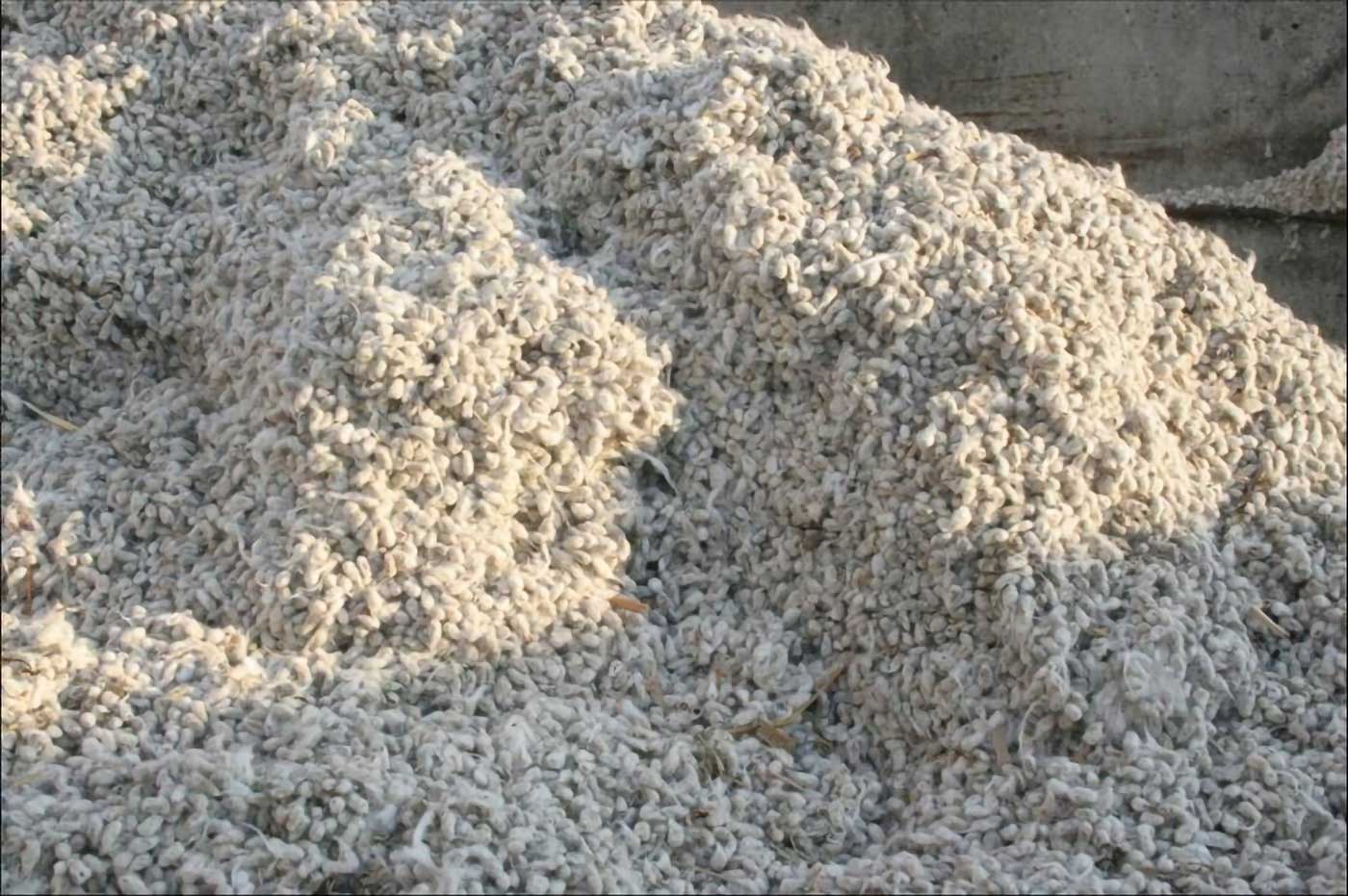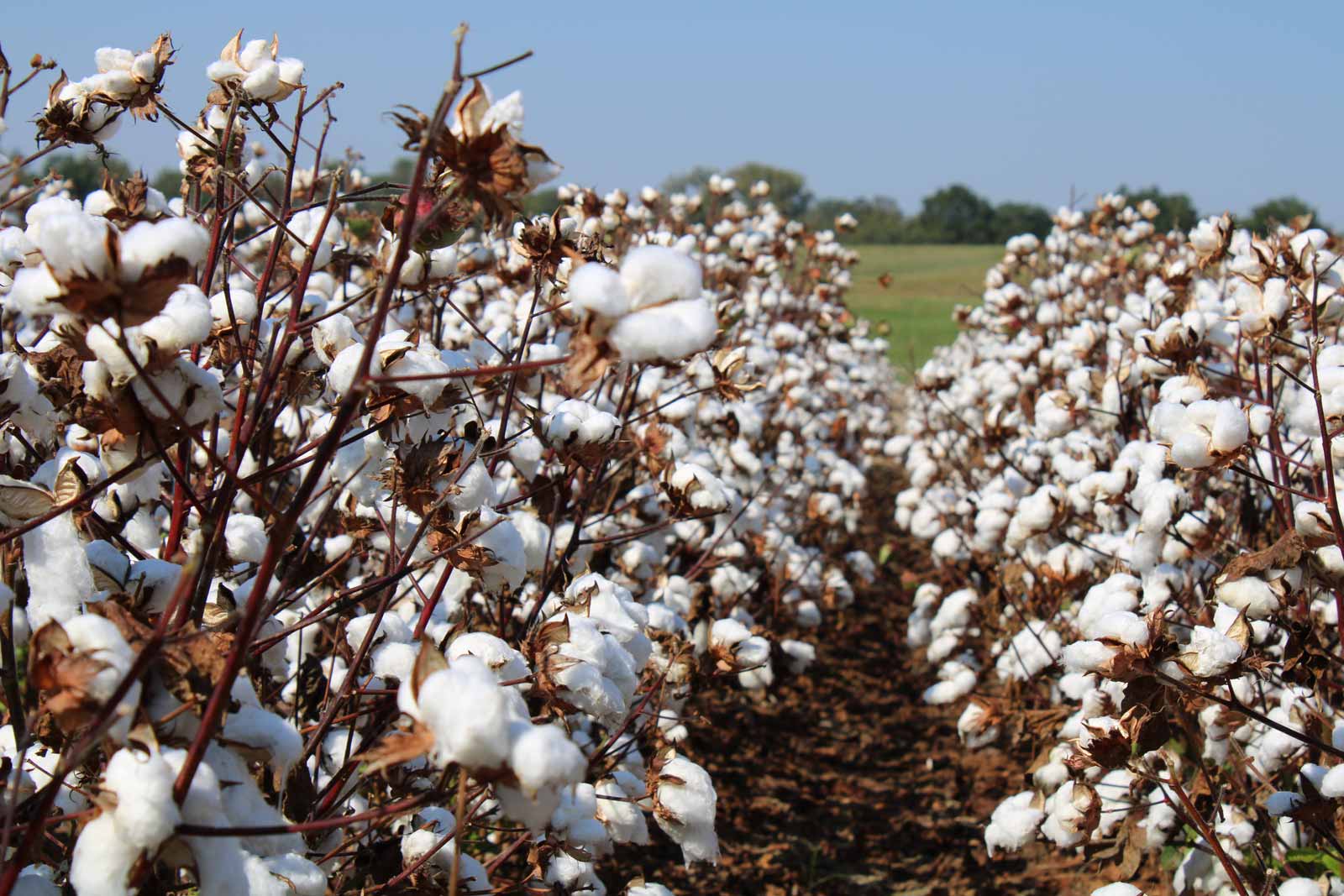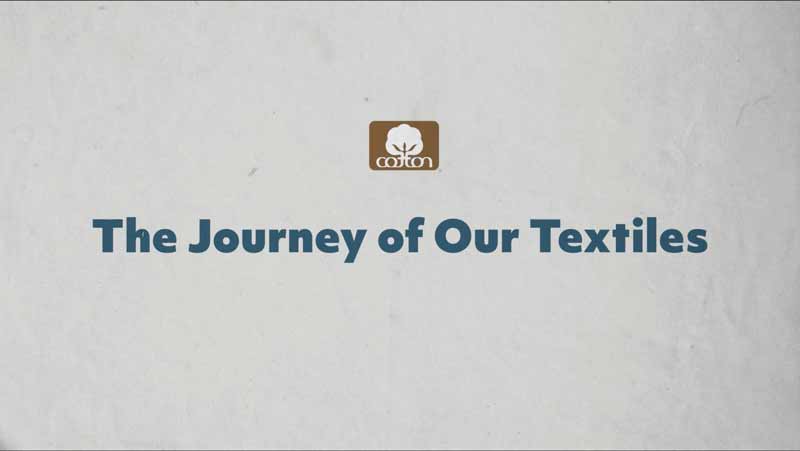Above: Cotton Incorporated’s Dr. Ed Barnes demonstrates a cotton harvest autonomous prototype.
C.H.A.P., or Cotton Harvest Autonomous Prototype, may well be the next generation of cotton field harvester – and more. A project currently underway by Cotton Incorporated is exploring the development of autonomous field robots to patrol rows and collect bolls at the moment they are ready for harvest.
The project, overseen by Dr. Ed Barnes at Cotton Incorporated presents an interesting alternative to the six-row machine pickers currently used by many U.S. cotton growers. A key advantage to the “row-bot” alternative is minimizing boll exposure to the elements. In theory, the robot’s optical recognition software would identify bolls ready for harvest, then the arm of the robot would collect and store the bolls. Currently, open bolls are exposed to the elements between 60 and 80 days, making them susceptible to inclement weather and other environmental stressors.
The optical technology and mechanical actions of the robot may also find additional uses, such as identifying pests and diseases, and even identifying and removing weeds from rows. In 2017, Cotton Incorporated began sponsoring robotic harvest studies with Dr. Joe Maja at Clemson University and Dr. Gary Rains at the University of Georgia. Efforts are expanding in 2018 with new projects at Texas A&M, Oklahoma State and Kanas State Universities.
Cotton growers should not rush to put their current pickers up for sale, though, as the robots are not likely to be commercially available for another ten years.



